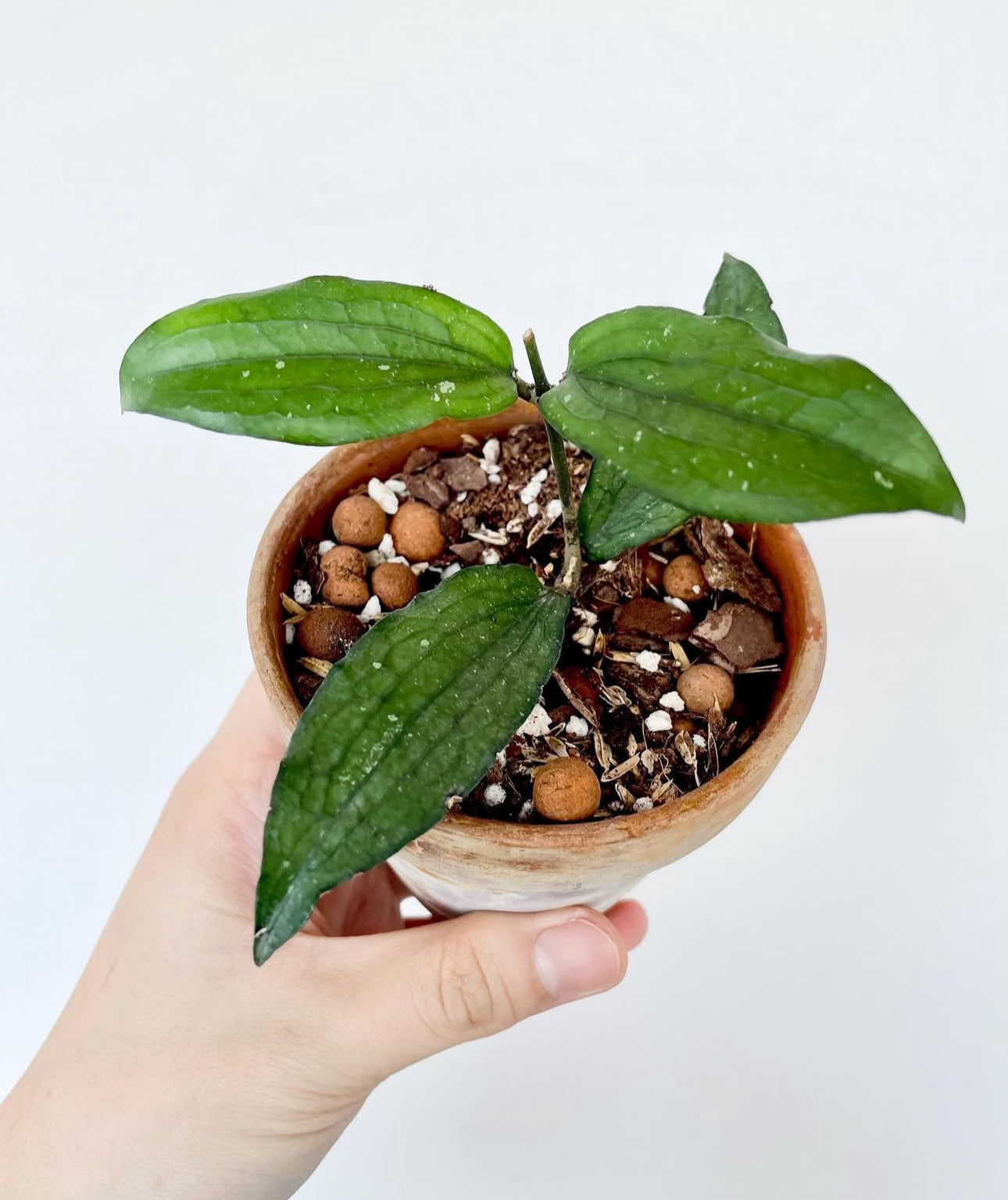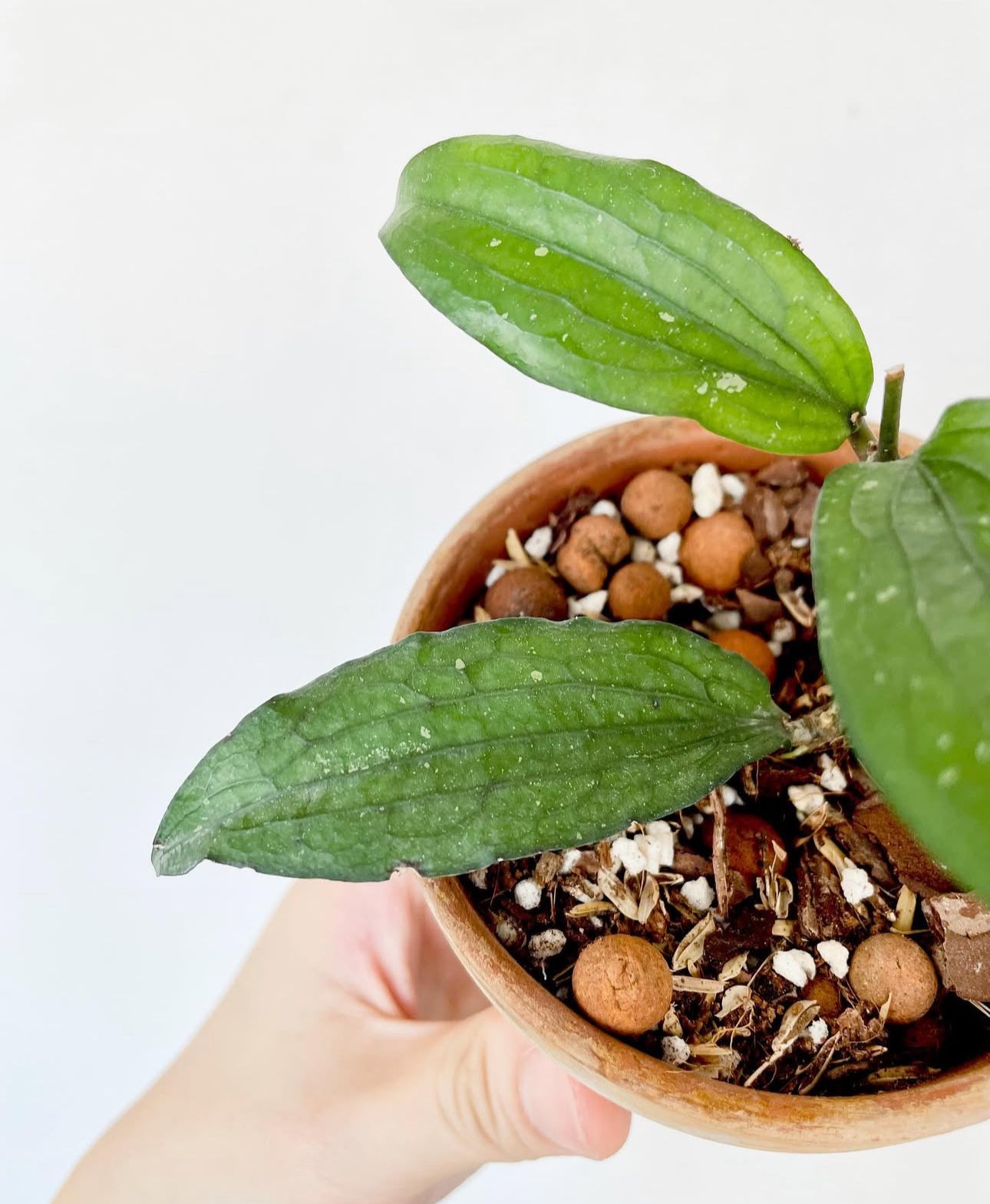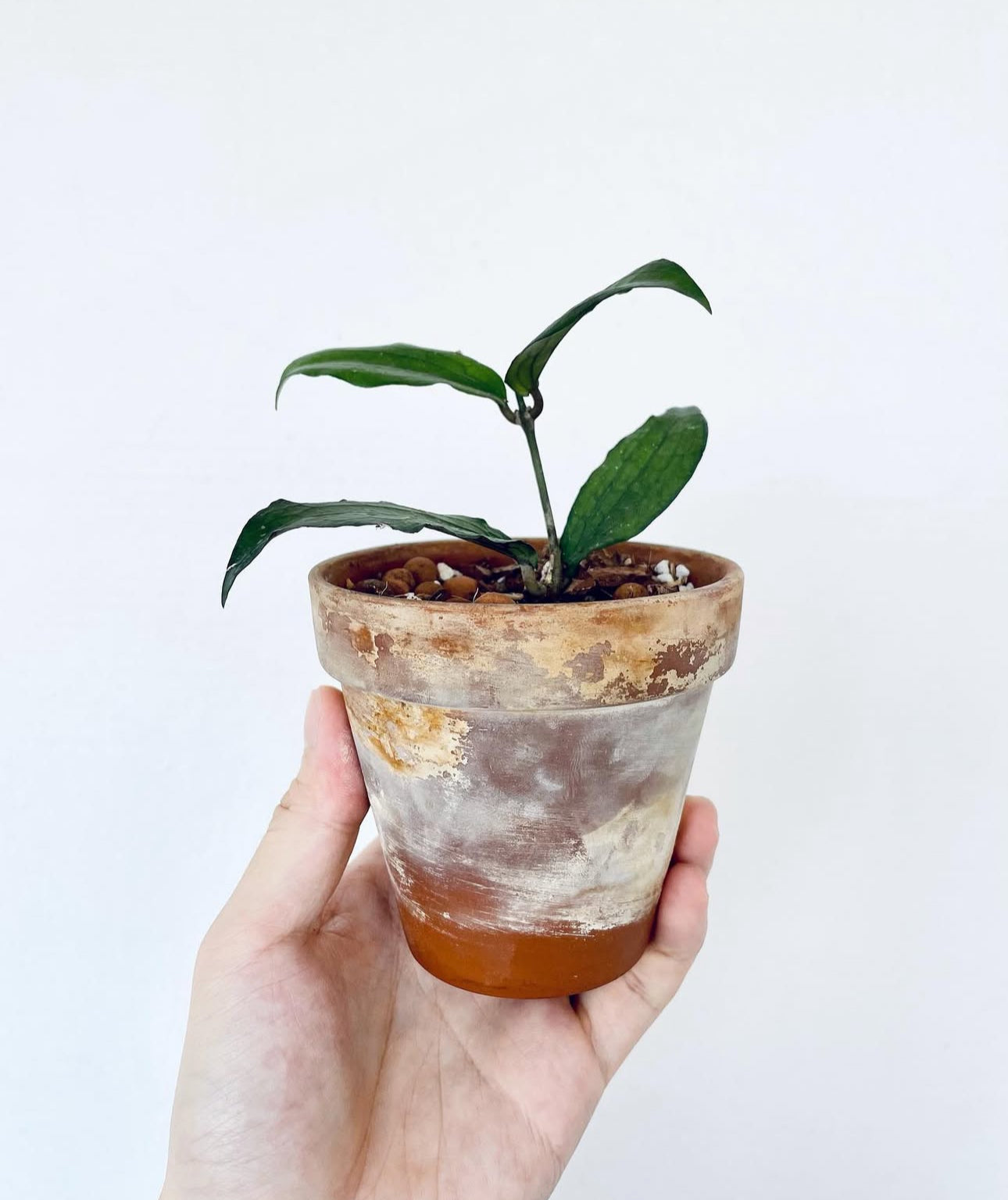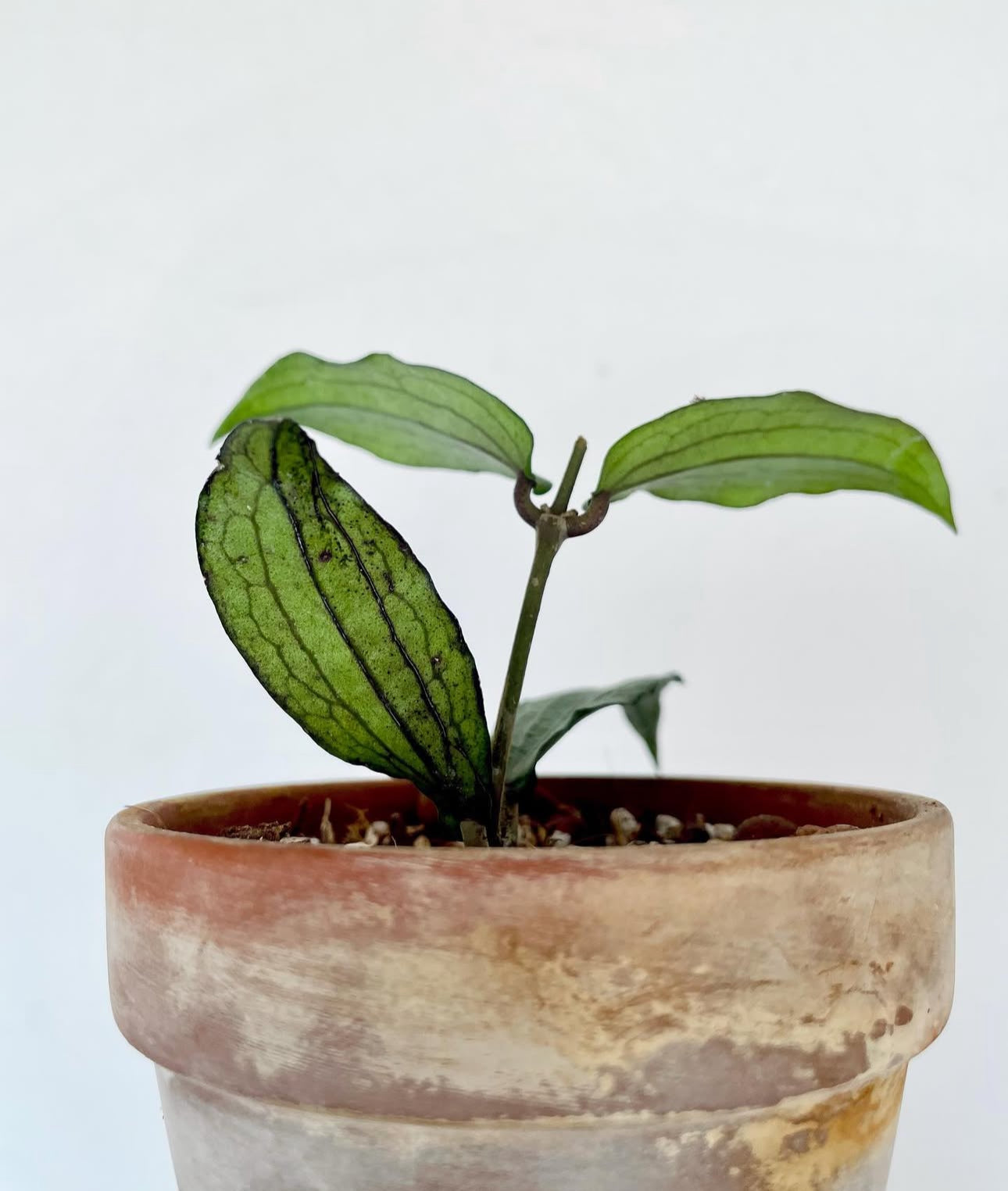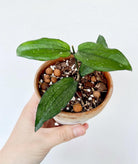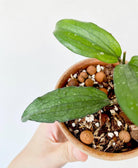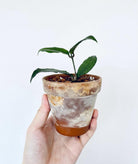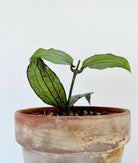Hoya Erythrina
Hoya erythrina is a beautiful and somewhat uncommon species of Hoya with thick, slightly fuzzy leaves and striking clusters of star-shaped flowers. It’s an epiphytic tropical plant, so it thrives in conditions that mimic its native Southeast Asian environment.
Here’s a complete care guide for Hoya erythrina:
🌤️ Light
-
Bright, indirect light is best.
-
Can tolerate some direct morning sun, but avoid harsh afternoon sun as it may scorch the leaves.
-
If indoors, east- or north-facing windows are ideal; if using grow lights, aim for ~12-14 hours/day.
💧 Watering
-
Let the top 2–3 inches of soil dry out before watering.
-
During the growing season, water thoroughly when dry.
-
In cooler months, reduce watering significantly.
-
Always ensure good drainage to prevent root rot.
🌡️ Temperature & Humidity
-
Prefers warm temperatures: 18–29°C (65–85°F)
-
Loves high humidity: 60%+ is ideal, but will adapt to average indoor levels.
-
Consider using a humidifier or placing the pot on a humidity tray.
🌱 Soil
-
Use a chunky, airy, well-draining mix—examples:
-
1 part orchid bark
-
1 part perlite or pumice
-
1 part coco coir or peat moss
-
-
A pre-mixed aroid or Hoya mix also works well.
🌸 Fertilizer
-
During growing season
-
Use a balanced or bloom-boosting fertilizer every 2–4 weeks.
-
Look for NPK ratios like 10-10-10 or 5-10-5.
-
🪴 Potting & Repotting
-
Hoyas like being a little root-bound, so repot only every 2–3 years or when roots are bursting out.
-
Choose a pot only 1–2 inches wider when repotting.
-
Always use pots with drainage holes.
✂️ Pruning & Support
-
Minimal pruning needed—only remove dead or leggy stems.
-
Provide a trellis or hoop; Hoya erythrina is a natural climber.
-
Do not cut the peduncles (flower stalks) after blooms—they often rebloom from the same spot.
🐛 Pests to Watch For
-
Mealybugs, spider mites, and aphids are most common.
-
Wipe with neem oil or insecticidal soap if needed.
-
Regularly inspect leaf undersides.
🌸 Blooming Tips
-
Needs bright light and maturity (often 2–3 years or more) to bloom.
-
Maintain consistent watering and don’t move it too much when it sets buds.
-
High humidity and regular feeding help encourage flowers.

